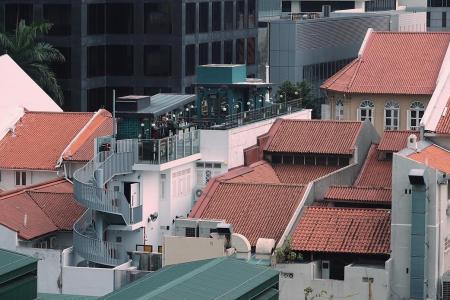Three parties told to pay damages to shophouse owner
The High Court has ordered a contractor, an engineer and an architect to pay damages to the owner of a Chinatown conservation shophouse for deviating from strict Urban Redevelopment Authority (URA) conservation guidelines in their renovation work.
URA had refused to approve the deviations, resulting in rectification costs and a delay of more than three years for the owner to reoccupy the three-storey shophouse in Boon Tat Street.
In the first such reported case, the court noted why it was important to practise the "strictest form of conservation" based on URA guidelines.
"When a conservation building in a historic district in Singapore is renovated, all those involved in the renovation must comply with conservation guidelines issued by the URA," wrote Justice Vinodh Coomaraswamy in judgment grounds last week.
Owner Euro Assets Holdings, which is seeking compensation totalling $1.5 million, hired Wei Siang Design Construction in 2011 as the main contractor to do certain alterations and additions to the shophouse.
It also engaged project consultancy Nota Group which, in turn, hired the architectural firm that appointed architect Hector Chia and engineer Lee Ong Fee for the project.
Contractor Wei Siang had initially sued Euro Assets for unpaid bills and Euro Assets counter-claimed for compensation, alleging the contractor, architect and engineer were responsible, in varying portions, for its loss.
The contractor, represented by lawyer Michael Por, denied he was in breach of contract.
The architect's lawyer Nigel Bogaars argued that his client owed no duty of care to the owner as the contractual arrangements excluded any responsibility to the owner.
The engineer, through his lawyer Timothy Ng, countered - among other things - that he owed no duty to the owner to ensure consistency between the works and the drawings, which the contractor had relied on to make the changes.
Justice Vinodh found that the owner reasonably relied on the architect's expertise and there was nothing in the contract to exclude the architect's potential liability to the owner in tort, based on the duty of care.
Based on the lawyers' submissions, Justice Vinodh found all three liable to the owner for three of the deviations, while the engineer - unlike the contractor or the architect - was not liable for the fourth deviation that involves the rear boundary wall.
The quantum of damages payable to the owner by the three parties are to be assessed at a separate hearing, he ruled.
Get The New Paper on your phone with the free TNP app. Download from the Apple App Store or Google Play Store now



